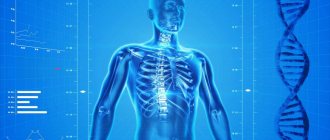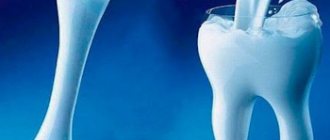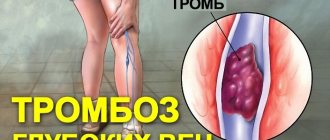Disruption of calcium metabolism due to deviations in the functionality of the endocrine glands can lead to serious complications. Calcium is a mineral necessary for the body to form and maintain healthy bone tissue. The body contains 1.5 kg of this mineral.
Calcium enters the body with food and is also produced by the parathyroid glands. The endocrine system regulates the metabolic processes between calcium and phosphorus. With hormonal deficiency, there is an increase in phosphate in the blood with a concomitant decrease in calcium levels. Dysfunction of the gland can also lead to the reverse process, when calcium levels are increased. Both types of deviations are not considered normal and cause the development of pathological processes.
Characteristics
In the human body, a violation of calcium metabolism provokes the development of various diseases. Calcium is considered an important element in the process of regulating the nervous excitability of muscle tissue, the process of hemostasis, in the stabilization of cell tissue membranes, and in the transduction of intracellular signals.
In medicine, there are two forms of disturbance of mineral metabolism in the endocrine system:
- hypocalcemia (hypoparathyroidism);
- hypercalcemia (hyperparathyroidism).
The second type of disease is more dangerous and requires more complex treatment. In most cases, if the pathology is advanced, doctors resort to surgery.
In order to understand what could provoke a change in the production of calcium by the parathyroid glands into the blood, how to deal with this disorder and what the consequences may be, each pathology should be considered separately.
Lack of calcium in the body: what threatens the deficiency of the element and how it can be determined
Bone fragility (osteopenia and osteoporosis). Forming and maintaining the strength of the skeleton is the most important function of calcium in the body. In the form of hydroxyapatite crystals, it makes up the main part of the mineral component of the intercellular substance of bone tissue - the matrix. A lack of calcium leads to impaired bone mineralization, which means a decrease in their strength.
Bone tissue is constantly renewed throughout life: the processes of synthesis and resorption (resorption) balance each other. In childhood and adolescence, formation predominates. Around the age of 20, bone mass reaches its peak, and after 40 years, resorption processes gradually come to the fore. Bone density decreases and osteopenia develops.
A particularly vulnerable group of people in this sense are women during menopause. Estrogens act as a inhibitor of bone resorption. With a decrease in their production in premenopause, calcium begins to be actively “washed out” from the body. If preventative measures are not taken, osteopenia progresses to osteoporosis, a disease in which bones become so fragile that fractures occur even without significant mechanical stress. This condition threatens disability and reduced life expectancy.
Women should pay attention to the fact that the loss of calcium from bone tissue begins long before the onset of menopause - around 40-45 years. At this time, it is already necessary to think about the prevention of osteoporosis. Ensuring adequate calcium intake in the body is one of the main measures to prevent disease.
Caries and tooth decay. Calcium is no less important for dentin and tooth enamel than for bones: it is an important structural component. If there is insufficient intake of a mineral from food, the body tends to utilize its reserves from tissues, and the condition of the teeth suffers first of all. They begin to crumble, the enamel becomes thinner, and the risk of developing caries increases. This happens very often during pregnancy.
Unfortunately, if the teeth have already begun to decay, additional calcium intake will not correct the situation: after eruption, the mineralization process is completed. Only an expensive dental procedure can save the situation. So it is easier to prevent a problem than to solve it. Adequate calcium intake (especially during childhood and pregnancy) will help maintain dental health.
Tendency to bleeding, bleeding gums. Calcium is actively involved in the process of blood clotting. Another of its functions is to maintain the strength of the walls of blood vessels. A lack of calcium causes capillary fragility, which often causes nosebleeds, and when brushing your teeth, your gums are easily damaged and bleed.
Deterioration in the appearance of the skin. Due to its participation in a large number of biological reactions, calcium has a diverse effect on the condition of the dermis and epidermis. Firstly, with its deficiency, collagen synthesis slows down. Because of this, the skin loses elasticity and wrinkles appear. Secondly, calcium deficiency in the body leads to impaired capillary tone, resulting in swelling and rosacea. Thirdly, the element regulates the formation of keratinocytes - epidermal cells and, thus, is responsible for the strength of the skin. Finally, calcium is involved in the production of skin lipids. If there is a lack of it, the protective barrier is destroyed and the skin quickly loses moisture.
Brittle nails and hair. Calcium affects the condition of not only the skin, but also its appendages. Nails and hair consist of the same cells as the epidermis, so a lack of macronutrients affects them just as negatively. The consequences are usually visible to the naked eye. Brittle, thinning nails, dull, dry hair, and slower hair growth are all likely signs of calcium deficiency.
Muscle cramps. The role of calcium in regulating muscle function is almost as well known as its importance for bones. It is responsible for muscle contractions and relaxations and normal neuromuscular excitability. A lack of calcium leads to disruption of these processes. The most common manifestation of this condition is painful cramps in the calf muscles (they often occur at night).
Disorders of the central and peripheral nervous system. They manifest themselves in different ways, such as tingling or numbness in the fingertips. Increased fatigue, insomnia, loss of energy, and memory loss can also be symptoms of calcium deficiency. The causes of such disorders are varied: blocking the release of neurotransmitters (serotonin, dopamine, acetylcholine, GABA), failure of the regulation of nerve conduction, disruption of the processes of excitation and inhibition - calcium is directly involved in all these processes.
Problems with blood pressure and heart. Calcium, along with other elements - potassium, magnesium, sodium - regulates the functioning of the cardiovascular system and maintains normal vascular tone. Deficiency of the mineral can lead to impaired myocardial contractility, increases the risk of developing arterial hypertension, affects lipid metabolism and, thus, indirectly provokes atherosclerosis.[3]
Causes of hypocalcemia
Endocrine organs are sensitive to effects on them, so calcium metabolism can be disrupted for various reasons.
A decrease in plasma Ca may occur for the following reasons:
- neck trauma with bleeding;
- complication after surgery on the thyroid gland;
- inflammatory processes;
- ionizing radiation;
- metastasis in endocrine organs;
- adrenal insufficiency;
- autoimmune diseases;
- systemic diseases.
Identifying the causes is considered the basis of treatment, since if the influence of negative factors continues, therapy will not be effective.
Classification
The classification is based on several characteristics.
Based on the content of the Ca+ cation, several degrees of severity of hypercalcemia are distinguished:
- Mild degree - total Ca content less than 3 mmol/l; ionized calcium – up to 1.5 mmol/l.
- Moderate degree - the level of total Ca is increased to 3.5 mmol/l; and the ionized calcium indicator is up to 1.8 mmol/l.
- Severe degree—total Ca level above 3.5 mmol/l; ionized calcium - more than 1.8 mmol/l.
According to the course, acute hypercalcemia (synonymous with hypercalcemic crisis) and chronic are distinguished.
A hyperparathyroid crisis occurs when excess calcium entering the bloodstream exceeds the excretory capacity of the kidneys. The critical calcium concentration is generally individual, but in most people the toxic effect appears already at levels of 3.4-4.1 mmol/l.
Causes of hypercalcemia
Excess Ca in plasma can be caused by several factors. It is not uncommon for calcium metabolism disorders to occur due to the development of malignant tumors or benign tumors.
In 80% of patients, hypercalcemia develops due to disorders resulting from the formation of a solitary adenoma on the pituitary gland. Adenoma, in turn, is formed due to stress, low blood pressure, hormone intake, etc.
In 12% of cases, the cause is the primary form of hyperplasia. 2% of patients are diagnosed with parathyroid cancer. About 6% of patients have multiple adenoma.
Reasons can also include:
- deficiency in the diet of foods containing calcium;
- violation of malabsorption functions of the intestine;
- chronic renal failure.
Treatment in this case involves eliminating the cause. If after this the indicators do not change, targeted therapy or even surgery is performed.
4.Treatment
The most effective and natural way to restore the optimally required calcium concentration is a fortified diet. It should, however, be understood that any diets, like all other treatment regimens, activities, procedures, can be developed and prescribed exclusively by a doctor.
The same applies to special calcium-containing supplements and drugs intended for the treatment of the most severe cases of calcium deficiency: such drugs can only be used as prescribed by a doctor.
A little more about the symptoms
The clinical picture in both cases is pronounced. The main area of damage is the skeletal system, which contains more than 90% of the total calcium content in the body.
Symptoms of hypercalcemia, regarding bone tissue:
- pseudo- and simple form of gout;
- deformation;
- pain;
- muscle weakness and atrophy;
- fractures even with simple bruises;
- cystic bone formations.
In the severe stage, there is a sensation of “pins and needles”, numbness and burning in certain parts of the body, and temporary paralysis of the pelvic muscles may occur.
Hypocalcemia is characterized by seizures that can affect not only the limbs, but also the muscles of the chest. The danger comes from a hypocalcemic crisis, which causes serious complications.
Increasing values
- increased production of parathyroid hormones due to its benign growth or malignant tumor;
- bone metastases in kidney, lung, and breast cancer;
- a special type of malignant tumor - carcinoma, which produces parathyroid hormone, while the primary cancer can be in the uterus, ovaries, thyroid gland or kidneys;
- injuries and illnesses in which a person is forced to remain motionless for a long time, causing calcium from the bones to move into the blood - bone fractures, spinal tuberculosis, Paget's disease or damage to bone tissue with improper formation and resorption, congenital hip dislocation;
- increasing vitamin D levels;
- adrenal disease, especially insufficiency;
- hemoblastoses or tumor diseases of the blood and lymph - especially myeloma, accompanied by destruction of bone tissue;
- Williams syndrome or “elf face” is a genetic disorder where several genes are missing;
- kidney failure;
- granulomatous diseases, especially sarcoidosis;
- excessive intake of medications containing calcium;
- milk-base or Burnett syndrome, when there is a lot of calcium in the blood, and the acid-base balance is shifted to the alkaline side;
- overdose of diuretics containing thiazide, or substances that potently remove potassium and sodium.
Hypercalcemic crisis
A rare but dangerous complication is hypercalcemic crisis. In an acute condition, the patient’s entire nervous system is disrupted and blood clotting accelerates. Increased blood density implies increased risks for the patient’s life, as this can lead to the formation of blood clots or complete cardiac arrest.
Hypercalcemic crisis has symptoms:
- maintaining temperature above 40°C;
- internal bleeding;
- signs of fever;
- severe itching of the skin.
Disturbances of the central nervous system lead to the occurrence of psychosis, and subsequently shock. The patient's condition leads to the fact that he does not understand what is happening. If medical assistance is not provided in a timely manner, respiratory paralysis begins, followed by cardiac arrest and death.
Interpretation of results.
Calcium levels are assessed over time by a doctor in combination with other laboratory parameters and clinical data. Independent, isolated assessment leads to incorrect conclusions.
All laboratory services
Make an appointment through the application or by calling +7 +7 We work every day:
- Monday—Friday: 8.00—20.00
- Saturday: 8.00–18.00
- Sunday is a day off
The nearest metro and MCC stations to the clinic:
- Highway of Enthusiasts or Perovo
- Partisan
- Enthusiast Highway
Driving directions
Hypocalcemic crisis
An exacerbation of calcium deficiency is characterized by a decrease in plasma minerals to less than 2.25 mmol/l. A hypocalcemic crisis is also dangerous.
The attack can occur suddenly, but, as a rule, it is preceded by a number of symptoms:
- feeling of "goosebumps";
- tingling feeling throughout the body;
- limbs and part of the face go numb;
- severe muscle weakness;
- sudden muscle pain;
- depression;
- change in skin color.
Gradually, loss of sensitivity and other signs are replaced by muscle twitching. Initially, the patient feels only mild and isolated spasms, but quickly enough the condition develops into attacks of severe convulsions.
Muscle tone is expressed by characteristic manifestations:
- “the hand of the obstetrician”;
- "horse foot";
- "fish mouth";
- and others.
The danger arises when spasms affect the muscle tissue of internal organs: renal/liver colic, laryngospasm or bronchospasm. Impaired breathing can cause asphyxia.
At the moment of crisis, the patient feels unbearable pain, from which he loses consciousness and the ability to rationally perceive what is happening.
List of sources
- Leonard R. Sanders. Hyperparathyroidism // Secrets of endocrinology / ed. M.T McDermott. - M.-SPb: BINOM Publishing House - Nevsky Dialect, 2001. - P. 129-140.
- Dedov I.I., Melnichenko G.A., Pronin V.S., et al. Clinic and diagnosis of endocrine disorders. - M., 2005. - P. 99–111.
- Volkov M.M., Kayukov I.G., Smirnov A.V. phosphorus-calcium metabolism and its regulation. Nephrology. 2010; 14(1):91-103.
- Cherenko S.M. Primary hyperparathyroidism: basics of pathogenesis, diagnosis and surgical treatment. - K.: Express polygraph, 2011. - 148 p.
- Mirnaya S.S., Pigarova E.A., Belyaeva A.V. et al. The role of the calcium-sensing receptor in maintaining the calcium homeostasis system // Osteoporosis and Osteopathy. 2010. No. 3. pp. 32–36.
Diagnostics
Calcium metabolism disorders are determined by laboratory tests. To determine the cause of the pathology, more extensive research is required, so specialists prescribe hardware studies. Additionally, differential diagnosis can be carried out.
Examination methods:
- urine test (general) - with elevated Ca levels, a mineral will be present in the biomaterial and the alkaline reaction will be pronounced;
- blood test (biochemical) - a significant increase/decrease in ionized and total calcium is detected in the plasma;
- ultrasound examination - the entire endocrine system is examined for the presence of tumors, tissue enlargement and other abnormalities;
- radiography - used to examine bones to determine the possible development of osteoporosis, fractures, cystic formations and other pathological processes;
- densitometry - used to accurately determine the density of bone tissue;
- radiography (with contrast agent) - helps to identify ulcerative lesions of the gastrointestinal tract and parathyroid adenoma in the retrosternal space;
- computed tomography - examines the urinary system and kidneys for the presence of stones;
- magnetic resonance imaging - allows you to obtain the most accurate data about tumor formations of the thyroid glands;
- spintigraphy is a study using radioactive isotopes, with the help of which it is possible to visualize the area under study.
Diagnostics allows you to obtain the maximum amount of information to identify provoking factors, characteristics of the disease and possible complications. Treatment can begin only after receiving the examination results.
Diet
There is no specially designed diet, however, in cases where an excess of calcium is caused by increased absorption of Ca+ in the intestine ( D-hypervitaminosis , Burnett's syndrome ), a diet with a decrease in calcium content in food is recommended (approximately at the level of 800 mg/day). For this purpose, it is recommended to limit the consumption of products such as sesame seeds, hard cheeses, almonds, sardines in oil, garlic, parsley, soybeans, hazelnuts, and also reduce the consumption of milk and dairy products.
Complexes with this research
Stress complex Assessment of the body's condition during stress RUR 4,310 Composition
Preventive check-up Universal annual preventive screening RUR 11,960 Composition
Monitoring the diet of a nursing mother Assessing metabolic disorders and the risk of iron and calcium deficiency RUR 2,940 Composition
IN OTHER COMPLEXES
- Advanced male anti-aging diagnostics RUB 33,710
- Women's anti-aging diagnostics RUB 12,070
- Check-up No. 1 for children and teenagers 10,950 RUR
- Vegetarians and vegans RUB 5,820
- Minerals for health 850 R








